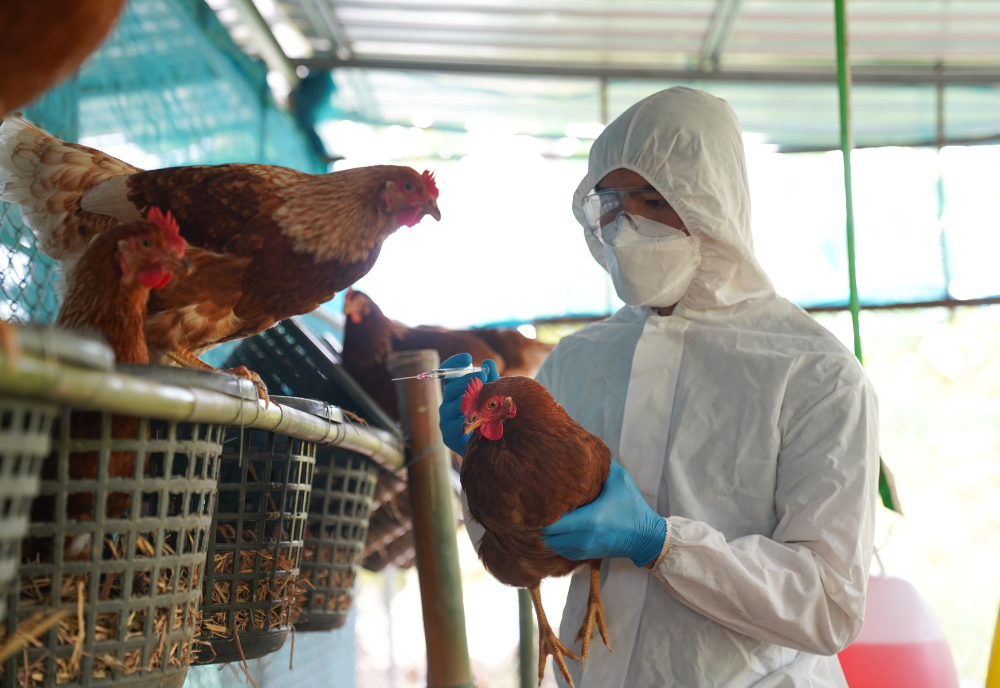USF-headquartered Global Virus Network issues urgent call on rising threat of H5N1 bird flu
Top global virologists publish a comprehensive analysis and advocate for a multi-government initiative in the Lancet Regional Health - Americas. USF-headquartered Global Virus Network issues urgent call on rising threat of H5N1 bird flu
Today, the Global Virus Network (GVN), representing eminent human and animal virologists from 80+ Centers of Excellence and Affiliates in 40+ countries and headquartered at the University of South Florida, published a comprehensive analysis and call-to-action in The Lancet Regional Health — Americas on the North American H5N1 avian influenza outbreak. The GVN calls on world governments to address its threat by enhancing surveillance, implementing biosecurity measures and preparing for potential human-to-human transmission.
“Understanding the current landscape of H5N1 infections is critical for effective prevention and response,” said Sten H. Vermund, MD, PhD, chief medical officer of the GVN and dean of the USF Health College of Public Health. “The virus’ ability to infect both animals and humans, combined with recent genetic changes, underscores the importance of proactive surveillance and rapid response measures.”
The outbreak has affected nearly 1,000 dairy cow herds and resulted in more than 70 human cases, including the first confirmed death in the U.S. The U.S. poultry industry is at significant risk, particularly in areas with high-density farming and where personal protective practices may be lacking. Since 2022, the highly pathogenic influenza has resulted in the loss or culling of more than 168 million poultry and is now circulating in all 50 states and Canada. While human-to-human transmission is not documented, experts warn that virus mutations and reassortments, or combining two flu viruses, could increase transmissibility.
GVN virologists underscore the need for improved pandemic preparedness, drawing on lessons learned from the SARS-CoV-2 pandemic and previous outbreaks. They advocate for a multi-faceted approach to pandemic preparedness, which includes:
1. Enhanced Surveillance: Continuous monitoring of animals, including testing their milk and wastewater, as well is that of individuals who work with infected animals to track virus evolution that may lead to human-to human transmissibility. The GVN calls for more comprehensive state-wide testing across the world.
2. Faster Genomic Data Sharing: Accelerating the release of genomic data to track virus evolution and spatial transmission, fostering collaboration among global research networks.
3. Improved Farm Biosecurity: Using personal protective equipment and strict farm cleaning protocols to minimize human exposure and prevent virus spread.
4. Preparedness Plans for the Roll-Out of Tests: Advocating for self-administered diagnostic tests to enhance early detection for farm workers, supported by healthcare access for frontline medical staff.
5. Strengthening Public Health Infrastructure: Increased funding and support for response mechanisms, particularly in high-risk regions, to better manage outbreaks.
6. Investment in Phenotype Prediction from Genetic Data: Invest in predicting the phenotypes of avian influenza viruses from genetic data, as key traits are difficult to predict solely from genomic sequences.
7. Investment in Rapid Vaccine Development: Encouraging the development and rapid deployment of vaccines for humans and animals, focusing on farm workers.
8. Preparedness Plan for the Roll-Out of Vaccines and Therapeutics: Prepositioned clinical studies to rapidly assess the properties of emerging virus strains and potential treatments.
9. Preparedness Plan to Allow for Rapid Clinical Studies: Focus on enabling rapid clinical studies to assess key properties of new pandemic strains, evaluate new vaccines and treatments, and support modeling efforts.
10. International Collaboration: Supporting a coordinated global response to track data, share research and prepare for emerging viral threats to reduce community vulnerabilities and improve response strategies.
While some surveillance of H5N1 has been carried out, the GVN highlights the lack of comprehensive testing and monitoring to assess the virus's spread and risks to public health.
“We are advocating for community-driven strategies to ensure the successful implementation of vaccines, if necessary,” said Christian Bréchot, MD, PhD, vice chair of the board of directors and president emeritus of the GVN and director of the USF Microbiomes Institute and senior associate dean for research in global affairs in the USF Health Morsani College of Medicine. “The situation with H5N1 demands heightened vigilance and collaboration across public health sectors. Early detection and robust surveillance are critical to prevent further spread.”
virology, infectious diseases, epidemic response, pandemic preparedness, global health security, viral diagnostics, vaccine development, antiviral research, public health collaboration, emerging pathogens, medical virology, scientific networking, biosafety, zoonotic diseases, virology training, disease surveillance, virus transmission, health policy, research funding
#GlobalVirusNetwork, #Virology, #InfectiousDiseases, #PandemicPreparedness, #GlobalHealth, #VaccineResearch, #VirusSurveillance, #AntiviralTherapy, #EmergingViruses, #ZoonoticThreats, #MedicalVirology, #PublicHealth, #ScientificCollaboration, #OutbreakResponse, #EpidemicControl, #HealthInnovation, #VirusPrevention, #BiosafetyMatters, #GVNResearch, #GlobalVirologists
International Conference on Network Science and Graph Analytics
Visit: networkscience.researchw.com
Award Nomination: networkscience-conferences.researchw.com/award-nomination/?ecategory=Awards&rcategory=Awardee
For Enquiries: support@researchw.com
Get Connected Here
---------------------------------
---------------------------------
instagram.com/network_science_awards

Comments
Post a Comment